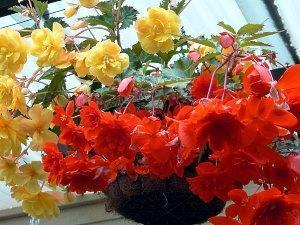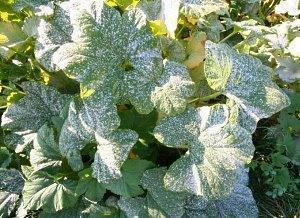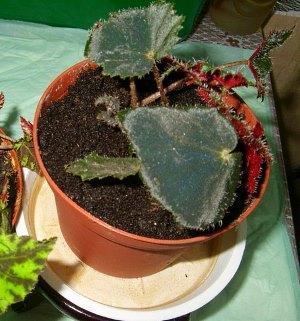Why begonia leaves dry - reasons and solutions
 Begonia is considered a popular flower, both in the summer cottage and for indoor breeding. Everything in it is beautiful and amazing: leaves, flowers, and the shape of a bush. But when growing it, almost every grower periodically encounters various difficulties. The most pressing problem in flower cultivation is falling and drying leaves. To prevent death, it is necessary to find out why the leaves of begonia dry up and what factors affect their fall.
Begonia is considered a popular flower, both in the summer cottage and for indoor breeding. Everything in it is beautiful and amazing: leaves, flowers, and the shape of a bush. But when growing it, almost every grower periodically encounters various difficulties. The most pressing problem in flower cultivation is falling and drying leaves. To prevent death, it is necessary to find out why the leaves of begonia dry up and what factors affect their fall.
Such problems most often arise with errors in plant care. Begonia leaves dry and fall for the following reasons:
- inappropriate conditions of detention;
- lack of trace elements;
- disease.
We select growing conditions
One of the characteristics of improper care is a sudden change in conditions. An indoor flower can experience severe stress if you put it on the balcony. Since certain types of begonias are intended for cultivation only indoors, and even in suitable weather conditions, begonias have dried leaves and flowers. What to do in this case?
As soon as a large number of dry leaves are found on the plant bush, it is necessary to return the plant to its previous conditions. Remove damaged foliage, feed with complex fertilizer and select a place with maximum illumination and no drafts.
If begonia leaves dry in winter, then the cause of such a problem is its innate high sensitivity to dry air. Therefore, in winter, it is better to place pots with plants away from heating appliances. But if this is not possible, then to increase the humidity next to the begonia, you can put containers of water and spray the bush daily.
This problem is typical for the street plant variety. The reason why begonia leaves dry on the street is most often insufficient soil moisture and too dry weather. Lack of irrigation can be seen by the dried-up tips of the leaves, after which they turn brown. The solution to this problem is sufficient watering and wetting with a sprinkler in the evening or early morning of the leaf mass. However, it should be remembered that the roots of the plant do not like stagnant water, so watering should be moderate, otherwise the begonia leaves will begin to fall off.
Choosing a plant food
Sometimes, even if all growing conditions are met, you can observe how the leaves and flowers of the begonia dry - what to do in this case? Regular feeding of plants will prevent the death of the leaf mass and help to grow a new one faster.
For begonias, it will be enough to feed up to 3 times a month. Liquid complex fertilizers with a minimum nitrogen content are best suited for this purpose. Potassium nitrate is also suitable, which is applied under the plant no more than once every two weeks. To maintain the leaves in extreme heat, you can use spraying with humate, epite, zircon.
Getting rid of diseases
Begonia leaves can dry out and fall off from diseases and pests resulting from improper care and adverse weather conditions.

 Gray rot... Begonia leaves can also dry out and fall off due to gray rot. The most favorable factors for the development of the disease can be warm and humid weather, during which many dust-like spores are formed. Its onset is easy to spot by watery spots with a gray bloom that appear on the tips of the shoots and leaves. With further spread, the disease affects the stems of the plant, which begin to rot and break. Foliage, flowers and buds become licky, curl and fall off. An effective way to combat gray mold is considered to be spraying with Bordeaux liquid (1%) or a soap-copper mixture, the preparation of which is described above.
Gray rot... Begonia leaves can also dry out and fall off due to gray rot. The most favorable factors for the development of the disease can be warm and humid weather, during which many dust-like spores are formed. Its onset is easy to spot by watery spots with a gray bloom that appear on the tips of the shoots and leaves. With further spread, the disease affects the stems of the plant, which begin to rot and break. Foliage, flowers and buds become licky, curl and fall off. An effective way to combat gray mold is considered to be spraying with Bordeaux liquid (1%) or a soap-copper mixture, the preparation of which is described above.
In conclusion, I would like to note. Do not sound the alarm if there are several dried lower leaves of begonia. Most likely, there is a normal plant development process during which the old leaves die off. Watch it for some time and take action if necessary.
Coral begonia. It has not bloomed for several years. Periodically, areas appear on the leaves that look like frostbite or, on the contrary, scalded with boiling water (pictured). In other leaves, the color changes - it becomes lighter, with a reddish tint. The flower stands one and a half meters from the sunny window. There is enough light, but direct sunlight does not fall on it. There are no drafts either. Can you please tell me how to help him? Thank!
The answer to your question will be published tomorrow in the section Questions and Answers.
Hello! I took a flower from work, I felt sorry for him. Just faded, as I understand it is begonia. I don’t know what kind. Was in a store pot. Remained unnecessary after March 8 ... sorry for him! Tell me what to do with it next? I just did the transfer. And all (
Forgot to attach a photo
Another
The answer to your question will be published in the FAQ section.
Good day. What about begonia? Can someone help?
Begonia leaves dry and curl when the flower is hot and lacking in water. Is there a heating battery under the windowsill? It can also be the result of sunburn or a draft. How to create ideal conditions of keeping begonias can be found in the article https://myvilla.decorexpro.com/en/begoniya-ukhod-v-domashnikh-usloviyakh/.